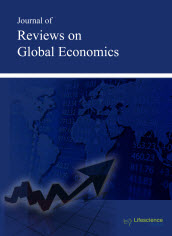jrge
Abstract - Predicting Distress in Islamic Banks: The Effectiveness of Capital Measures in CAMELS Framework
|
|
Abstract: This study aims to identify key capital adequacy measures and other parameters that effectively predict distress in Islamic banks taking a panel of 65 banks from 13 countries between 2008-2017 using logistic regression model. The paper also intends to see whether simpler ratios perform better than more complex, risk weighted measures in predicting distress in these banks. A total of nine alternative capital and leverage indicators are used in the model that mainly rely on financial and accounting data, which are supplemented by the addition of market leverage for listed banks. In order to capture variability in cross country analysis and impact of economic conditions and shocks, the study also adds several macroeconomic indicators in the model. The results suggest that most of the standard CAMELS indicators are relevant for studying distress in Islamic banks. Further, it is shown that three other capital ratios – Tier 1, tangible common ratio and market leverage - are equally effective in studying Islamic bank failures. The findings, however, reflect that Basel III leverage ratio and other accounting-based ratios do not offer effective early warning signals of Islamic bank stress. Overall, equity based risk-weighted capital ratios offer a more robust framework of regulation and supervision in Islamic banks. Keywords: Early Warning System, Leverage Ratio, Bank Failure, Basel III, CAMELS, Risk-Based Capital, Regulation, Islamic Banks, Emerging Markets. |
Abstract - Does Education Reduce CO2 Emmisions? Empirical Evidence of The Environmental Kuznets Curve in Indonesia
|
|
Abstract: The purpose of this study is to analyze whether education has a role in energy use in society using the Environmental Kuznets Curve (EKC) hypothesis during the period 1972-2016 in Indonesia. The paper applied the Autoregressive Distrubuted Lag (ARDL) Bound Test approach to identify co-integration relationships among variables in the model. The results confirmed the evidence that education initially increased CO2 emmisions and at some point education reduced co2 in the short run but not in the long run. In addition, i also found conclusive evidence to support the Inverted U-shaped EKC hypothesis of the relationship between GDP per capita and environmental degradation. The stability test has conducted in estimated model and the result indicated that estimated model is stable over time. Keywords: CO2 Emmision, Environmental Kuznets Curve, Education. |
Abstract - Relationship between Leverage and Firm Size Toward to Real Earning Management (Unit Analysis of Mining Company Indonesia Exchange Stock Period 2012 Until 2015)
|
|
Abstract: This study found new results from the development of previous research. Previous research, earnings management is measured through discreationary accruals by disbursing total accruals with non-discreationary accruals using the Jones Modified model (Dechow et al., 1995) with the formula TA = Nit – CFOit. Previous research and this study were conducted on mining companies listed on the Indonesian stock exchange in the period 2012 to 2015. The results of previous studies that leverage had no effect on earnings management and earnings management is an intervening variable that has a significant influence on earnings quality. (Irene Barus et al., 2018). This study aims to analyze the relationship between leverage ratio and firm size to real earnings management using discretionary accruals through real daily earnings management activities. Managers tend to choose earnings management through real activity manipulation rather than earnings management through accruals (Graham et al. 2005; Roychowdhury (2006: 338). The results of this study indicate leverage variables have a positive and significant effect on real earnings management activities. Keywords: Leverage, Firm Size, Real Earning Management. |
Abstract - Method of Payments in the Merger and Acquisitions Transaction: The Case of Saudi Arabia
|
|
Abstract: The performance of mergers and acquisitions companies has been broadly investigated in diverse advanced share markets primarily in the US and UK economies. However, little evidence has been found in an emerging market like Saudi Arabia. For this reason, this study examines the long-run share performance of acquirer’ companies listed on the Saudi Arabia Stock Exchange (Tadawul) from 1st January 2000 to 31st August 2017. Using the buy-and-hold abnormal return method, the present study finds that the acquirer companies’ shares for the cash payment method continues to outperform their counterparts of non-cash payment against the equal-weighted and value-weighted indexes. The presence of abnormal return opportunities that may be exploited by investors in the three-year holding period following the completion of M&A events might provide valuable insight to individual and institutional investors. As there is no national evidence on share performances of acquirer’s companies over the long-run period, the present findings add to a growing body of M&A literature. Keywords: Mergers, acquisitions, short-and-long run performance, Saudi Arabia. |






















